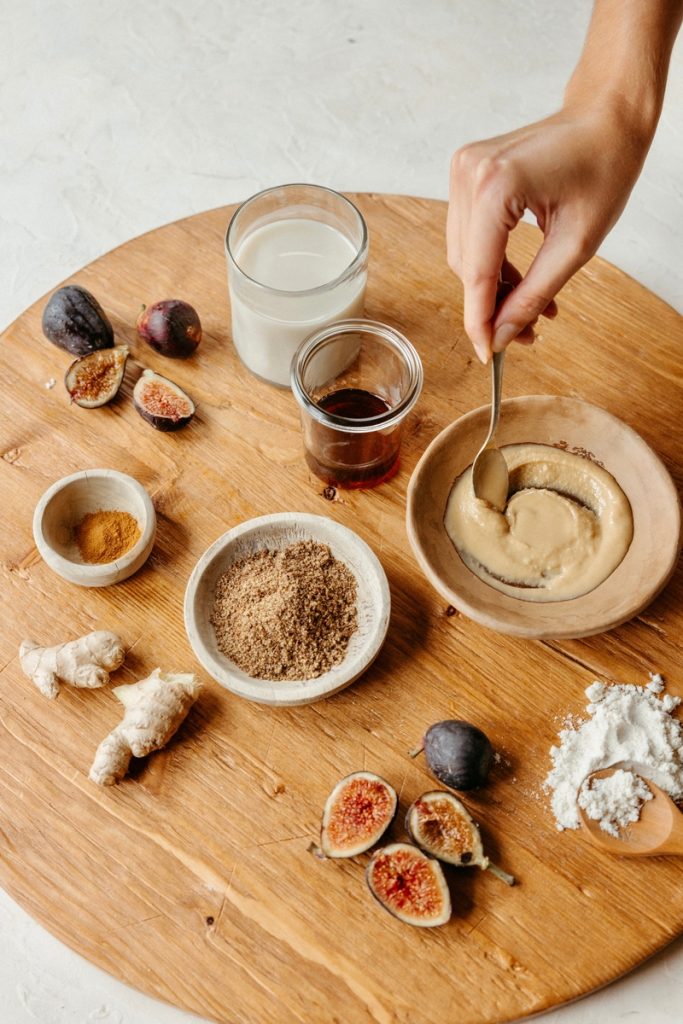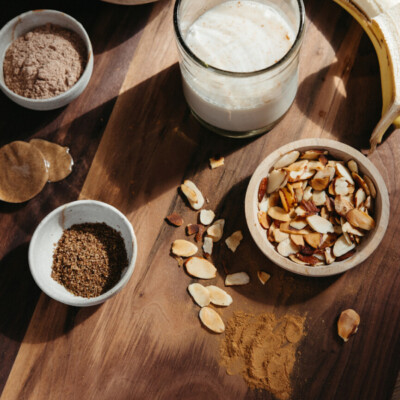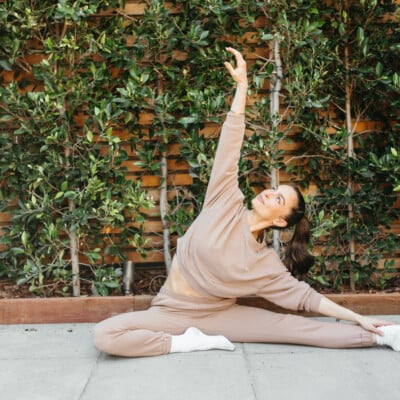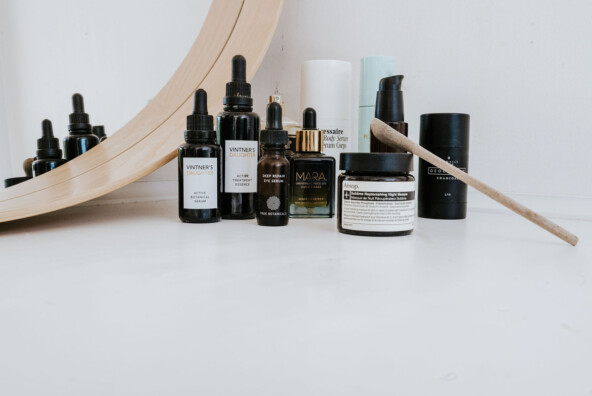We have TikTok to thank for so much. A new, accessible outlet to promote creative and identity-based expression, recipes that got us through the darkest days of the pandemic, and of course, many a trend to keep us engaged and exploring new things on the daily. But when it comes to TikTok health trends, hopefully by this point, we know to pause before proceeding. That’s because health hacks—as magical as they may seem on camera—often are spread by people who can’t claim to be an expert on the topic of our health. And of course, it’s true that the more bizarre something may seem on the internet, the more attention it gets.
There’s been the sinus-cleansing “cure” of sticking garlic up our noses (nope), sunscreen contouring (yikes), and lemon coffee as a weight loss miracle (I’m not going there). But alongside these clearly erroneous ideas stand a good number of trends that can actually support a well-rounded, non-restrictive, and expert-approved lifestyle.
Featured image by Belathée Photography.

TikTok Health Trends, Broken Down
Let’s take the Hot Girl Walk, for example. The term was coined by Mia Lind, who, in January 2021, posted her first TikTok video taking a HGW. What may have seemed simply like… walking (already a solid form of exercise), benefited from the intention she wove into her time outdoors. Lind claimed that what set this style of walking apart from simply putting one step in front of the other was the energy you brought to it. She said there were only three things you could think about while taking your walk: what you’re grateful for, your goals and the steps you’ll take to achieving them, and, in essence, your hotness.
While the data isn’t tracked, I have to think that this third rule helped propel Megan Thee Stallion’s rebellion against the “gatekeepers of beauty,” contributing to our culture’s reshaping of the word “hot.” (Paris Hilton, eat your heart out.)
So if one trend could positively impact our culture—and our wellness—in such a way, was it possible that other TikTok health trends could as well? I spoke with Maggie Michalczyk, a registered dietitian, to discuss some of the biggest trends influencing social media users and beyond today. Let’s get into it—prepare for plenty of surprising insights to come.

Maggie Michalczyk is a Chicago-based registered dietitian, recipe developer, and author of the Once Upon a Pumpkin cookbook. She’s a nutrition contributor to many wellness outlets including SHAPE magazine, Well + Good, and Women’s Health. Through her love of food and nutrition, Maggie strives to empower people in the kitchen with recipes that are healthy and fun.

Nature’s Cereal
As far as trends go, nature’s cereal has been around for a while. (It’s been two years since Sherwayne Mears first shared the recipe on his TikTok, @natures_food.) For those not in the know, nature’s cereal consists of blueberries, blackberries, and pomegranate seeds splashed with coconut water. And while the initial video caught users’ attention, it wasn’t until Lizzo made it herself that nature’s cereal blew up.
While Michalczyk is a fan, she thinks of nature’s cereal as more of a snack than “an actual meal.” She likes that the fiber provides vitamins, minerals, antioxidants, and fiber but calls out the lack of protein as a miss. “Breakfasts that contain protein, fat, and fiber will keep you fuller for longer with more energy.” (This is particularly important to call out, as Mears said he “literally felt like I could run a marathon” after eating a bowl.)
To balance your bowl of nature’s cereal, Michalczyk suggests trying the following:
- Add almonds, chia seeds, or flax seeds
- Put the fruit on a piece of toast with almond butter for more protein, vitamin E, and magnesium
- Blend the fruit in a smoothie with almond milk, almond butter, and a scoop of protein powder

Lemon Water
Claims about lemon water’s health-transforming capabilities run the gamut: it’s said to promote weight loss, support detoxification, and more. And while there is some truth to what’s been said (and promoted on the platform often via “that girl” videos), Michalczyk says to pause before calling lemon water a magical elixir.
“While squeezing fresh lemon into warm water is believed to improve digestion, it’s not a special drink that will promote weight loss or ‘detox’ your body.” She likes that the beverage easily infuses your day with antioxidants and vitamins, but expresses caution when it comes to the claims you see online.
The final verdict on lemon water? “It is an easy, tasty way to increase your hydration and vitamin intake, which is why it’s great—especially helpful for those of us who find it hard to drink plain water!” says Michalczyk. We’re fully on board.
Liquid Chlorophyll
As a casual viewer of routines-oriented content on Reels and TikTok, I’m no stranger to the almost inky-blue water my eyes now know to recognize as a chlorophyll-tinted green. That’s because alongside smoothies, coffee alternatives, and perhaps an internal shower drink (that’s for another article), creators seem to be guzzling liquid chlorophyll with reckless abandon.
Michalczyk notes the lack of research there is to support the “presumed benefits” of liquid chlorophyll. “Chlorophyll is a green pigment derived from plants. I think liquid chlorophyll is enticing because it seems like an additional way to implement ‘greens’ into the diet.” While it isn’t necessarily harmful, shelling out for tiny containers of the stuff isn’t likely going to do you a lot of good.
But what about the benefits like clear skin and a shot of energy that only a triple espresso could rival? Possibly placebo, Michalczyk says. And while our expert is quick to say that she’s not anti-chlorophyll, she does recommend getting your greens from whole food sources. She throws out kale, spinach, and collard greens, but encourages you to seek variety when it comes to getting your nutrients.

Pre-Workout Powders
Admittedly, I didn’t even realize pre-workout was a thing until now. That’s likely because it’s lived largely in the world of body-building before social media brought it mainstream. Nowadays, you’re likely to see all manner of wellness creators down a pre-workout before hitting the gym or pavement. I had to wonder: was pre-workout a crucial step missing from my fitness routine?
Michalczyk says pre-workout comes with its pros and cons—and a lot of it comes down to correct use. “The UL for caffeine in adults is 400 mg. A majority of pre-workout powders and canned drinks I’ve seen have 200-350 mg of caffeine. While this is within range, other ingredients are added to stimulate you during your workout.”
She calls out ingredients like beta-alanine, taurine, vitamin B6, and vitamin B12 as culprits for causing the following:
- jitteriness
- tingling
- itchiness
- anxiety
- increased sweating
- nausea
To avoid these side effects, Michalczyk recommends opting for a pre-workout “with a lower caffeine dosage and fewer added ingredients.” She emphasizes doing as much research as you can and vetting companies before making your choice, as supplements “aren’t closely regulated by the FDA.”
Some good substitutes for pre-workout? Michalczyk suggests seeking out natural sources of caffeine through coffee, matcha, and tea. She even cites a new study that showed almonds can support muscle recovery and reduce the fatigue caused by exercise.”

12-3-30 Workout
We have the 12-3-30 workout to thank for the resurgence of long lines at the gym for treadmills and the popularity of under-the-desk options. And online, our feeds are flooded with an influx of videos showcasing on-trend sneakers walking an endless route. What is it, exactly? The 12-3-30 workout is surprisingly simple. Set the treadmill to a 12% incline and walk at 3 miles per hour for 30 minutes. Easy, right?
Both its simplicity and relative ease compared to other more intense workouts is part of the method’s appeal. It seems that everyone swears by it, Michalczyk included. “It is an easy way to implement steady-state cardio on an incline. Walking has incredible benefits, such as improving your cardiovascular health, and all of the positives that come with exercising daily.”
Out of all the trends included in this list, the 12-3-30 workout might be Michalczyk’s favorite. The benefits combined with accessibility make it a beginner-friendly double threat. But even if you consider yourself a gym junkie already, it could be worth incorporating into your routine. This writer has and can confirm: it works.
A trend we can always get behind? Intentional morning routines—let Camille’s inspire your own.






